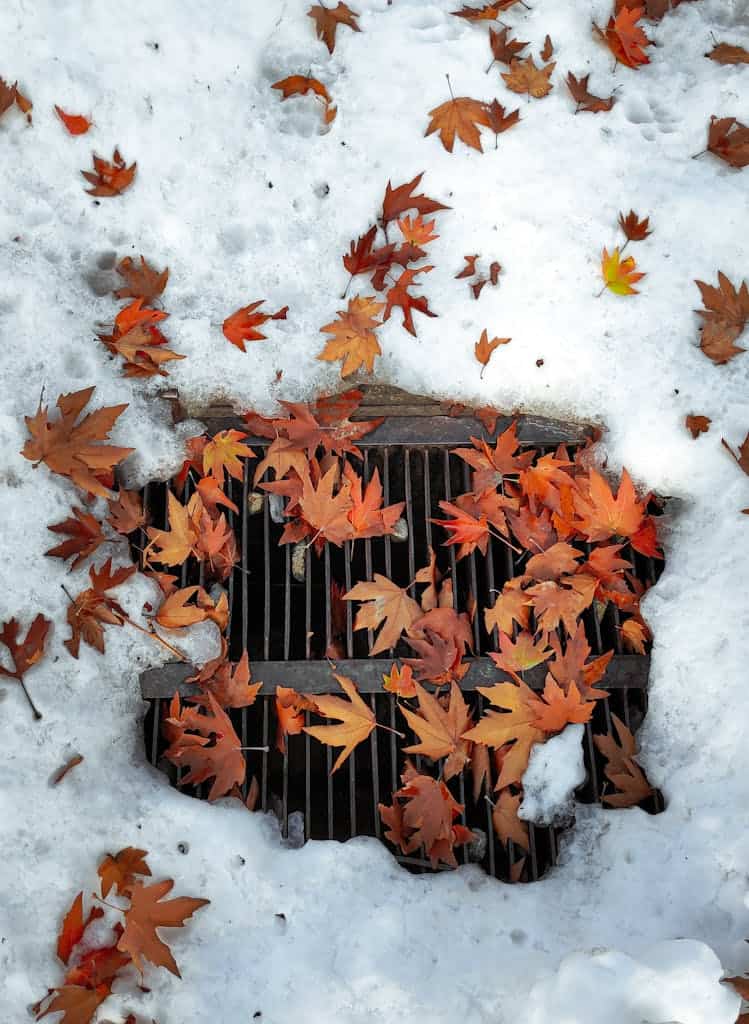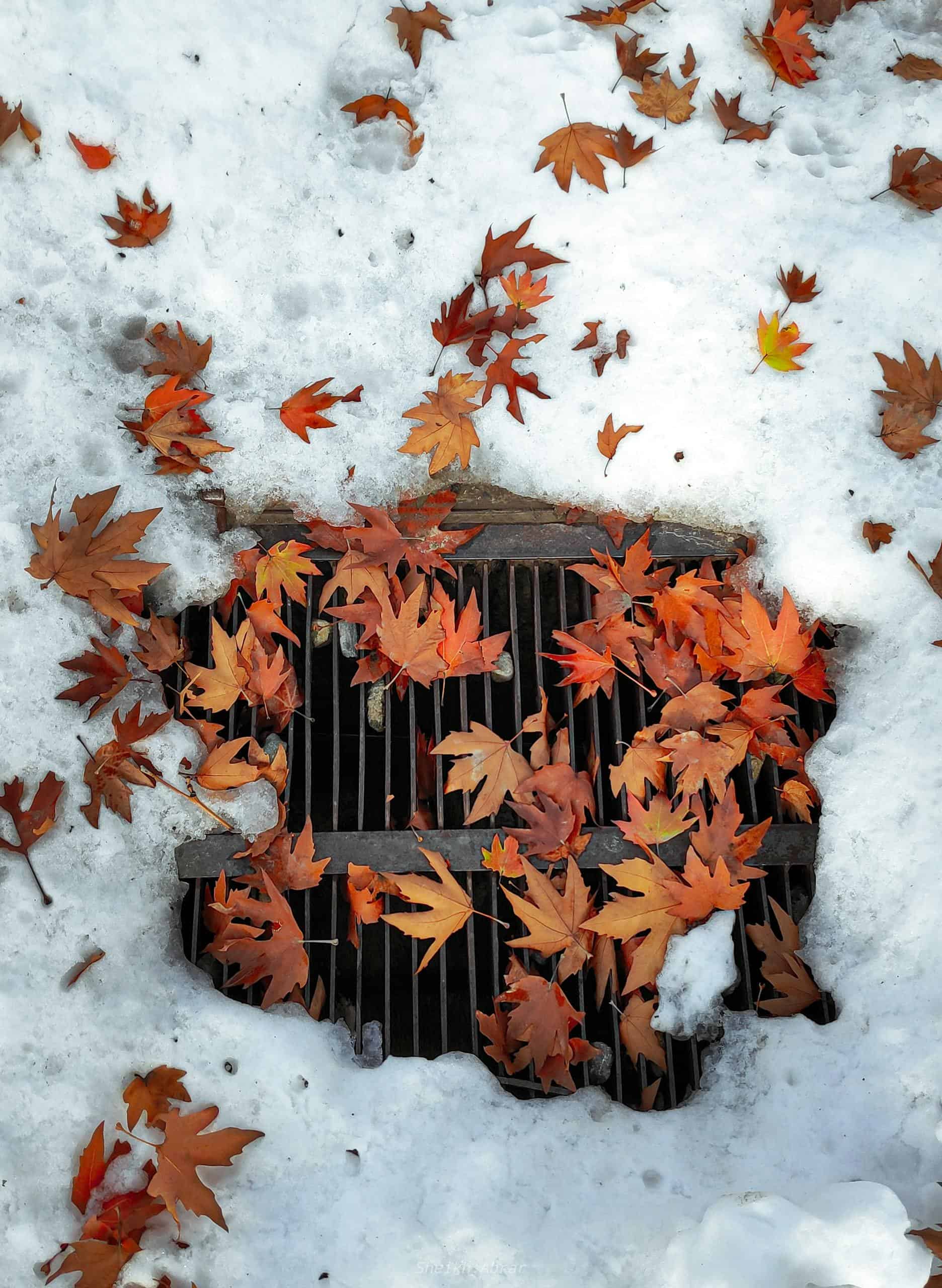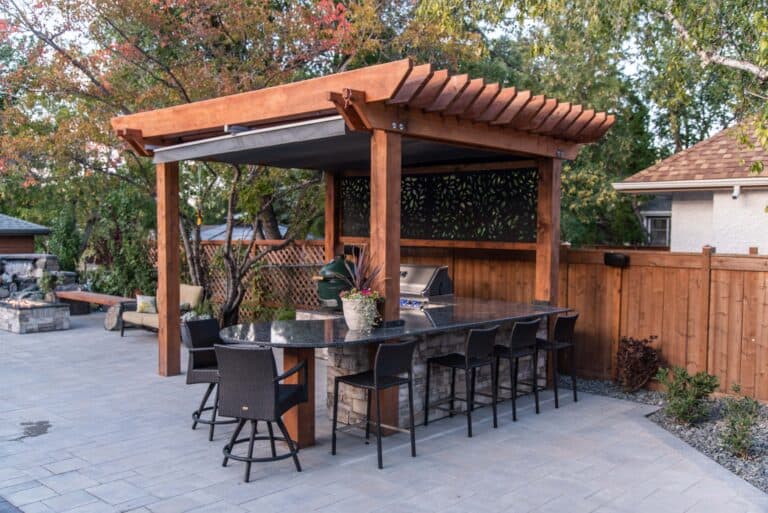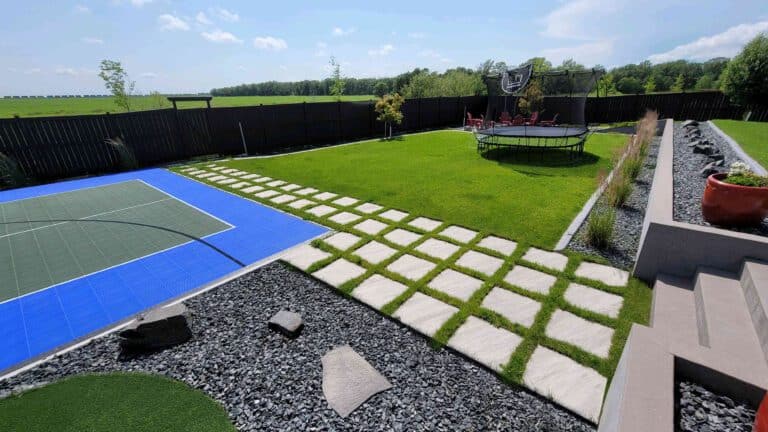Landscape Drainage Winnipeg: Prevent Puddles, Protect Your Investment
Why Drainage Design Matters More Than You Think
A well-designed landscape isn’t just about what you can see; it’s also about how water moves beneath the surface. Poor drainage can quietly undermine patios, driveways, and garden beds over time. From soggy lawns to shifting pavers, these small issues can turn into costly repairs that affect both property value and landscape longevity.

The good news? With the right drainage solutions, you can prevent puddles, protect your property, and maintain a beautiful yard all year long. Understanding drainage principles helps homeowners recognize problems early and make informed decisions about professional solutions that deliver lasting results.
Recognizing the Warning Signs of Poor Drainage
Common Drainage Problems in Winnipeg Yards
Standing water in lawn areas represents the most obvious drainage failure. If puddles persist 24-48 hours after rain or snowmelt, your property lacks adequate drainage capacity. These wet zones prevent grass growth, create muddy conditions, and provide breeding grounds for mosquitoes during the summer months.
Persistently damp driveways and walkways indicate improper grading or inadequate drainage infrastructure. According to the Canadian Mortgage and Housing Corporation, moisture accumulation near foundations causes 80% of basement water problems, making surface drainage critical for protecting your home’s structural integrity.
Edge vegetation yellowing or dying often signals either excessive moisture or drought stress. Ironically, poor drainage creates both conditions, waterlogged roots in low areas and rapid drying in raised areas. This vegetation stress indicates underlying drainage patterns requiring professional correction.
Winter-Specific Drainage Failures
Freeze-thaw surface damage appears as cracked pavers, shifted edging, or sunken areas. When water accumulates and freezes, it expands with tremendous force, creating the heaving and settling that destroys hardscape installations. The University of Manitoba’s engineering research indicates that proper drainage eliminates 85% of freeze-thaw damage in residential landscapes.
Ice accumulation patterns reveal drainage deficiencies. Large ice sheets on walkways, persistent ice dams at foundation edges, or frozen puddles lasting weeks all indicate water that should drain but instead pools and freezes. These hazards create safety risks while signalling drainage problems requiring attention before they cause structural damage.
Effective Drainage Solutions: A Systems Approach
Grading and Slope Correction: The Foundation of Drainage
Proper surface grading represents the first line of defence against drainage problems. All surfaces should slope away from structures at a minimum 2% grade (2 feet of drop per 100 feet of distance). This seemingly small slope makes an enormous difference in water management effectiveness.
Strategic grade corrections redirect water toward appropriate drainage areas, swales, storm sewers, or designated absorption zones. Professional grading considers entire property drainage patterns rather than addressing individual problem spots in isolation. This comprehensive approach prevents solving one area’s drainage while creating problems elsewhere.
French Drains: Subsurface Water Management
French drain systems collect and redirect subsurface water using perforated pipes surrounded by gravel. These installations intercept groundwater before it reaches problem areas, providing invisible drainage that maintains landscape aesthetics while solving persistent moisture issues.
Typical French drain installations extend 18-24 inches deep, running from problem areas to appropriate discharge points. The gravel envelope surrounding perforated pipes facilitates water collection while preventing soil intrusion that would clog the system. Proper installation includes landscape fabric separating gravel from surrounding soil, preventing the sediment migration that causes premature system failure.
Strategic placement addresses specific drainage challenges. Foundation drains protect basements from moisture infiltration. Intercept drains collect water before it reaches problem areas. Curtain drains redirect water around rather than through problem zones. Each application requires professional design ensuring proper depth, slope, and discharge planning.
Catch Basins and Channel Drains
Surface collection systems manage water where grading alone proves insufficient. Catch basins installed at low points collect surface water, directing it through underground pipes to appropriate discharge locations. These systems prove particularly valuable for patio and driveway areas where drainage requirements conflict with level surface needs.
Channel drains (also called trench drains) collect water along linear paths. These systems excel at controlling water at pavement edges, across driveways, or along building foundations. Modern channel drain systems incorporate decorative grates that maintain aesthetic appeal while providing effective drainage capacity.
The Concrete Foundations Association recommends catch basin systems for any hardscape installation exceeding 500 square feet in Winnipeg’s climate, recognizing that freeze-thaw cycles demand reliable drainage, preventing ice damage and surface deterioration.
Downspout Extensions and Roof Drainage Integration
Proper roof drainage management prevents the concentrated water flows that create many landscape drainage problems. Standard downspouts discharge tremendous water volumes; a 1,000 square foot roof section produces over 600 gallons per inch of rainfall according to EPA calculations.
Extension systems carry roof water at least 6-10 feet from foundations, discharging into designated drainage areas rather than creating localized flooding. Underground extensions eliminate surface tripping hazards while ensuring reliable water removal even during heavy precipitation events.
Integration with landscape drainage coordinates roof water management with the overall property drainage strategy. Rather than treating downspouts as isolated problems, comprehensive planning incorporates roof drainage into grading plans, French drain systems, or dedicated dry wells, creating cohesive water management addressing all moisture sources.
Materials and Construction Considerations
The Role of Quality Aggregates
Proper base materials determine drainage system longevity and effectiveness. Clean, angular gravel creates void spaces, allowing rapid water movement while maintaining structural stability. Working with quality aggregates from trusted suppliers ensures materials meet specifications for particle size, cleanliness, and drainage characteristics.
Drainage layer construction typically incorporates 4-6 inches of clear stone (3/4-inch limestone), providing both drainage capacity and structural support. This layer separates surface installations from native soil, preventing the contamination that gradually reduces drainage effectiveness over time.
Filter fabric applications prevent soil migration into drainage systems without restricting water flow. Professional installations specify commercial-grade geotextile fabrics rather than consumer landscape fabric, ensuring durability matching the permanent infrastructure it protects.
Professional Installation Standards
Proper slope maintenance throughout drainage systems ensures gravity moves water effectively. Even small errors, reverse slopes or flat sections, create system failures requiring expensive correction. Professional installers use laser levels and precise grading equipment, maintaining critical slopes throughout installation.
Connection integrity between drainage components prevents the leaks and failures that compromise system performance. Proper fittings, adequate overlap, and appropriate sealing ensure water moves through intended pathways rather than escaping into surrounding soils.
An Integrated Landscape Design Approach
Whole-Property Water Management
At Lawn ‘N’ Order, we approach drainage as an integral component of complete landscape design rather than an afterthought, addressing isolated problems. This integrated perspective considers:
- Existing site conditions: natural drainage patterns, soil types, and topography
- Proposed landscape elements: hardscape, planting areas, and functional zones
- Regional climate factors: Winnipeg’s precipitation patterns, freeze-thaw cycles, and seasonal variations
- Long-term performance: systems designed for decades of reliable operation
Comprehensive planning prevents the “whack-a-mole” approach, where solving one drainage problem creates another. By analyzing entire property water movement patterns, professional design creates solutions that work harmoniously, protecting your investment through coordinated systems rather than patchwork fixes.
Protecting Property Value and Landscape Longevity
Quality drainage infrastructure represents insurance protecting larger landscape investments. The cost of proper drainage systems, typically 10-15% of total landscape budgets, prevents damage that could destroy 100% of hardscape and planting investments over time.
Research from the Appraisal Institute indicates that drainage problems reduce property values by 5-15% depending on severity, while professionally engineered drainage solutions maintain and often enhance property values through improved functionality and reduced maintenance requirements.
Long-term cost avoidance makes professional drainage design financially prudent even beyond immediate problem solving. Preventing foundation damage, hardscape replacement, and landscape renovation far outweighs initial drainage system investment, particularly given Winnipeg’s challenging climate conditions.
Protect Your Investment with Professional Drainage Design
Good drainage protects your investment, not just your lawn. Whether addressing existing problems or planning new landscape installations, professional drainage design ensures water moves where you want it, protecting structures, preserving hardscapes, and maintaining healthy planting areas through all seasons.
Understanding that drainage represents infrastructure rather than cosmetic improvement helps property owners prioritize this critical element appropriately. The systems hiding beneath your landscape’s surface determine whether your visible investments thrive or deteriorate over time.
Concerned about drainage issues on your Winnipeg property? Contact Lawn ‘N’ Order for a comprehensive drainage assessment and professional solutions. Our experienced team analyzes your property’s unique conditions, designs effective systems addressing your specific challenges, and implements solutions that protect your landscape investment for decades ahead.
Don’t wait until minor drainage annoyances become major structural problems. Professional drainage design today prevents costly repairs tomorrow while ensuring your landscape performs beautifully through Manitoba’s demanding climate conditions.






